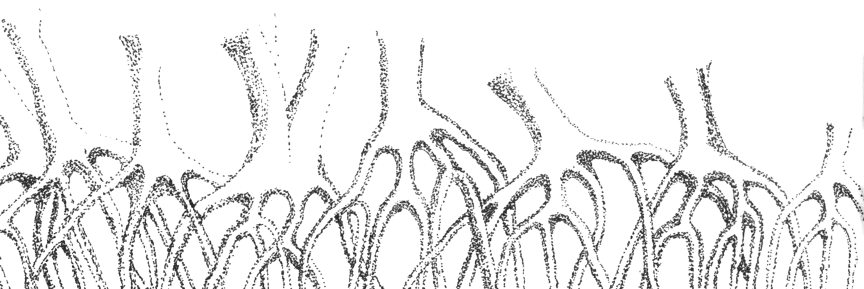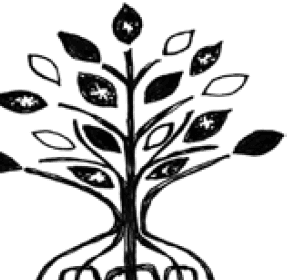K’na, the Dreamweaver (an excerpt)
Ida Anita del Mundo
T’boli translation by Maria Oyog Todi
K’na the Dreamweaver is a feature film, written and directed by Ida Anita del Mundo. It premiered at the Cinemalaya Independent Film Festival in 2014 where it won the Special Jury Prize and Best Production Design. It was also Best of Show at the 2015 Female Eye Film Festival in Toronto, Canada, and has been shown around the world. It is the first feature film in the T’boli language.
INT. WEAVING HUT – DAY.
The next morning, K’na assists Be Lamfey in her weaving.
They are doing the ikat dye-resist method.
K’na tries to tie the threads in the right pattern, but she
makes a mistake and cries out in frustration.
BE LAMFEY
Don’t get frustrated, dear.
(Be-i htakas, nga.)
K’NA
But I can’t do it!
(Bede la gmou du!)
BE LAMFEY
Start over, do it slowly.
(Bud nebutem, hanganagem.)
K’NA
How do I do this pattern… It’s so difficult!
(Kmo u du ni betek nidu? Tey megel!)
Be Lamfey demonstrates how to tie the design.
BE LAMFEY
First, you must see the whole design in your
mind. Then, tie the parts that should be white,
then the red, and leave the parts that should be
black untied.
(Gna, hol hendemem tu betek, ominem tembong du,
Bukay, hulo, ne tebelem tu dumun ani mo hitemen.)
K’na tries to finish the pattern started by Be Lamfey.
BE LAMFEY
Do it slowly. Be careful, because you cannot
Re-do it once it has been dyed.
(Yo hol henganagem, la bud gemo-em du ne sok
deng tnogo.)
K’na succeeds in tying the threads.
BE LAMFEY
You must be able to see the parts and the
whole…See the colors on the blank abaca. The
pattern is there, even if you cannot yet see it.
(Hol tengelem kwadagen, beteken be baluhen hitem,
tubeteken no ditu, balu lang deng tonem du he.)
Images of K’na studiously learning to follow the
Instructions.
INT/EXT. VILLAGE – DAY.
Montage. The whole village is involved in the different
Stages of t’nalak weaving – from stripping the abaca
trunks, to spinning the fibers into threads, to creating
the pattern with the ikat technique, to dying the threads,
to weaving the threads together, to shining the finished product.
Each person in the community has his or her own part in
making the textile. Among them are Be Lamfey, K’na, and
Silaw.
As the process goes on, Be Lamfey grows visibly weaker.
The flirtation between K’na and Silaw continues, blossoming
into the beginnings of a serious relationship.
EXT. DRYING AREA. DAY.
The montage ends with K’na and Silaw among unfinished
pieces of t’nalak that have just been dyed red and have
been hung out to dry.
SILAW
Red in the t’nalak cloth symbolizes passion.
Did you know that?
(Hulo be tnalak tulonen yom koyoem mo du,
Tnegonem ko?)
K’NA
(laughing)
That’s so silly! Everyone knows red is for
the blood of our brave ancestors.
(Te-e keng yo du, kde-en gotu temngon du hulo
Lito kem fu tekuy lobo.)
SILAW
Oh, you must be mistaken! Red is for passion,
White means purity…
(Na sala yo du kom, hulo yom ke koyoem hol mo du.
Ne bukay yom tey ktataman landu bo-olen…)
K’NA
And black?
(Ne hitem?)
SILAW
Black is for the despair of my broken heart!
(Hitem mo be yom kegeba hoso u!)
K’NA
You’re wrong! How can your heart be broken?
(Sala yo du kom, kmo te kegeba hoso-em du kun?)
K’na laughs at Silaw and shoves him playfully. They run
after each other among the hanging fabrics.
It starts to rain and the red dye colors K’na and Silaw’s
clothes and faces as they try to take down the weavings.
Realizing the futility of their actions, they drop the red-
dyed threads and start laughing.
SILAW
I love you!
(Kenbong nawaw u!)
K’NA
What?!
(Bon tu du?)
SILAW
(shouts)
I love you! K’na, I love you!
(Kenbong nawaw u K’na, kenbong nawaw u-u!)
K’NA
I love you, too!
(Kenbong nawaw u sdo-u!)
It rains and thunders harder. The two laugh and open their
arms to the sky as they get soaked by the rain.
Transition shots – after the rain, atmosphere
INT. K’NA’S HUT – NIGHT.
When K’na arrives home, it is late and she is soaking wet.
When she enters the long house, she sees some of the women
of the village and a healer tending to Be Lamfey who is
having a feverish dream.
K’NA
Grandma? Grandma, are you alright?
(Be, be, bon ni du gfa-em?)
K’na takes Be Lamfey’s hands. In her stupor, Be Lamfey
regains a moment of lucidity. Her hand tightens around
K’na’s.
BE LAMFEY
Always dream, K’na.
(Henlosem kemna, K’na)
K’NA
Don’t leave me…I have much to learn still.
(Beem tebel o-u…tey de he noyo tengonu.)
BE LAMFEY
Have faith. The design is here, even if
you cannot see it yet.
(Holi hemtahu. Betek eles no be ni ne,
Ani-en ke la deng tonem du.)
Be Lamfey continues mumbling in her feverish state. K’na
stays by her grandmother’s side and eventually falls
asleep.
28—EXT. WATERFALLS. DAY.
Dream sequence. K’na is led into the forest by her mother
and Be Lamfey. They take her hand and lead her to a raging
waterfall.
Walking under the curtain of water, they reach a cave.
Their footsteps echo in the cavern.
Inside, there are stalactites and stalagmites that shine
like crystals. K’na glances behind her, but her mother and
grandmother are gone.
29—INT. K’NA’S HUT. DAY.
When K’na wakes with a start, no one is in the hut.
K’NA
(To herself)
Fu Dalu? A dream…Be Lamfey…
(Fu dalu? Ko-kna he be)
There is a wet piece of white abaca thread tied to the tree
outside, but she hardly notices it.
K’na rushes out to find Be Lamfey. She had her first
Dream from Fu Dalu.








